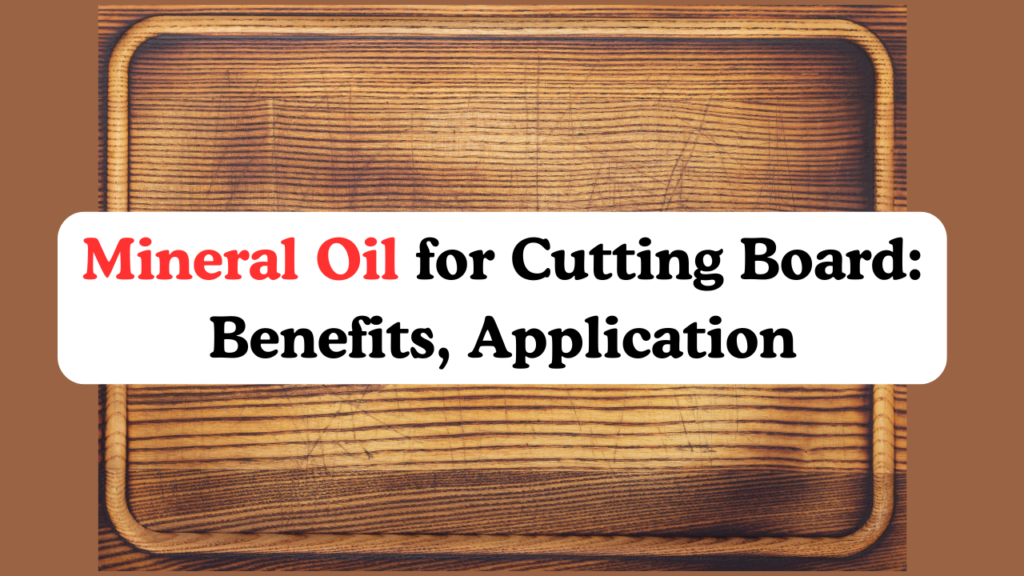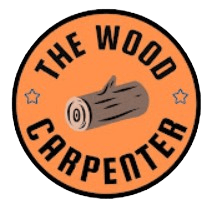
Cutting boards are a must-have in every kitchen. They go through a lot of chopping, slicing, and dicing, but people often forget to take care of them. To keep wooden cutting boards in good condition, one product works best: food-grade mineral oil.
In this guide, we’ll explain why mineral oil is the top choice for wooden cutting boards, how to use it the right way, and answer some common questions.
What is Mineral Oil?
Mineral oil is a clear, odorless, and tasteless oil made from petroleum. Don’t worry—it’s completely safe when you use food-grade mineral oil, which is specially made for kitchen and food use.
Unlike olive or vegetable oils, mineral oil doesn’t spoil or go bad over time, making it the safest and most dependable option for caring for wooden boards.
Why Wooden Cutting Boards Need Mineral Oil
Wooden boards are different from plastic ones because they can soak up water and germs if not cared for. Applying mineral oil protects the wood, makes it look better, and keeps it safe to use.
Benefits of Mineral Oil:
- Moisture protection – Stops the board from swelling, cracking, or bending.
- Odor and stain resistance – Reduces strong food smells and stains from soaking in.
- Better durability – Helps the board stay strong and last longer.
- Restored look – Gives the board a smooth, polished finish again.
Benefits of Using Mineral Oil on Cutting Boards
- Food-safe and non-toxic
- Deeply penetrates wood pores for better protection
- Prevents splitting and cracking
- Restores sheen and beauty
- Affordable and easy to buy (pharmacies, kitchen stores, or online)
How to Apply Mineral Oil to Cutting Board (Step-by-Step)
Keeping your cutting board conditioned is simple. Follow these steps for the best results:
Step 1: Clean the Cutting Board
Wash with mild soap and warm water. Dry thoroughly. Never oil a damp board.
Step 2: Use Food-Grade Oil
Ensure the bottle specifies “food-grade mineral oil” (not industrial).
Step 3: Apply Oil Generously
Pour 1–2 tablespoons of mineral oil directly on the board. Spread evenly using a soft cloth or paper towel. Cover the front, back, sides, and edges.
Step 4: Let the Oil Soak
Allow the board to absorb the oil for 4–6 hours, preferably overnight.
Step 5: Wipe Excess Oil
After soaking, buff the surface with a dry cloth to remove residue.
Step 6: Repeat Regularly
For new boards: Once a week for the first month.
After initial treatment: once a month—or whenever your board looks dry.
👉 Pro Tip: For extra protection, finish with a beeswax-mineral oil blend to create a thicker water-resistant layer.
Maintenance Tips for Wooden Cutting Boards
- Never soak in water or put in a dishwasher.
- Disinfect gently with vinegar or lemon + coarse salt.
- Store upright or in a dry place to avoid moisture retention.
- Reapply oil whenever your board starts to look pale or dry.
FAQs on Mineral Oil for Cutting Boards
1. Can I use cooking oils like olive or coconut instead?
No. These oils turn rancid, leaving sticky residue and bad smells. Stick to mineral oil.
2. How often should I oil my cutting board?
New boards: weekly for the first month.
Regular use: once a month or as needed.
3. Is mineral oil safe for food contact?
Yes! Food-grade mineral oil is safe, non-toxic, and approved for kitchen use.
4. What if my board still looks dry after oiling?
Apply another coat. Some woods (like bamboo) are highly absorbent.
5. Can I use mineral oil on bamboo cutting boards?
Absolutely. Bamboo boards also benefit from oil, but may need more frequent applications.
6. What’s the difference between butcher block oil and mineral oil?
They’re often the same. “Butcher block oil” is just food-grade mineral oil marketed for cutting boards.
Final thoughts
Using mineral oil for cutting boards is the best way to extend their life, maintain hygiene, and keep them looking brand new. Application is quick, inexpensive, and takes only a few hours of soak time.
Whether you own a wooden cutting board or butcher block, regular mineral oil treatment will protect your investment and make your kitchen tools last for years.
💡 Final Tip: Make oiling your cutting board part of your monthly kitchen routine—it takes minutes but pays off for decades!

